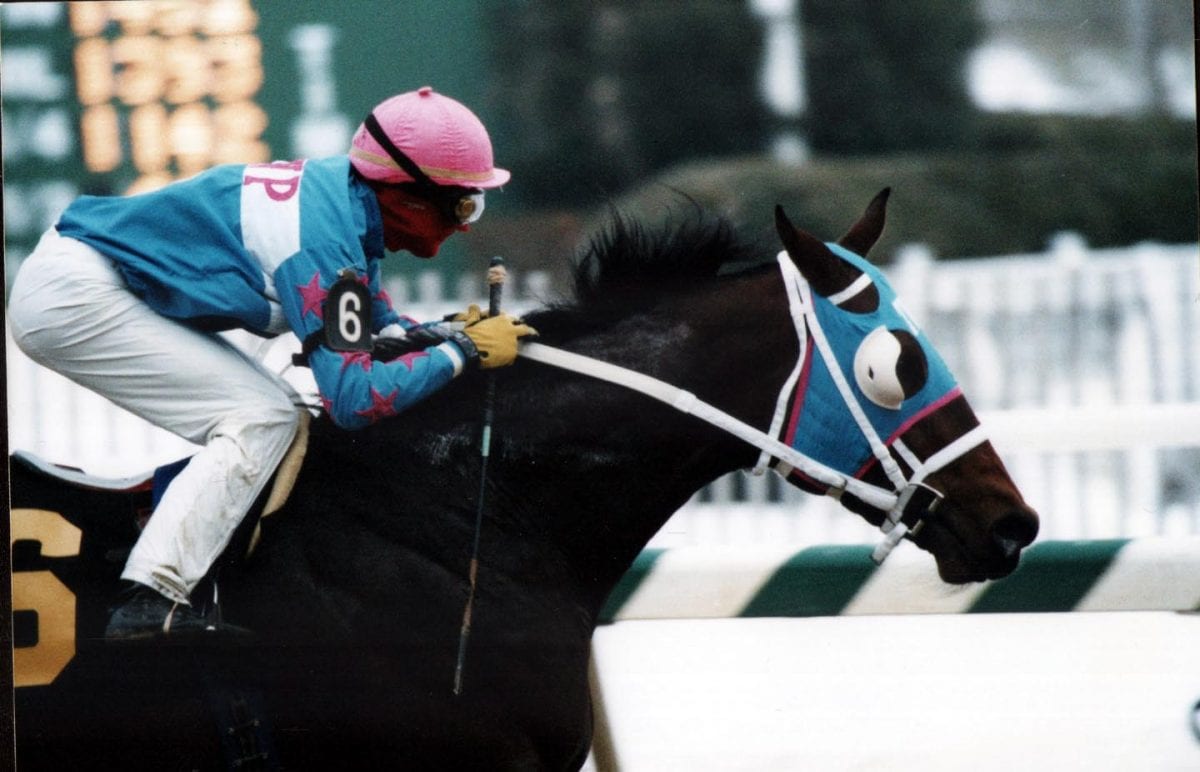by Teresa Genaro
Among the many complaints leveled at racing’s regulatory bodies — specifically state racing commissions — one of the most serious is that trainers with multiple medication or drug violations get off too easy. With a model rule passed on July 31 in Saratoga, the Association of Racing Commissioners International (ARCI) hopes to bring those complaints to an end.
Under ARCI-011-020: Medications and Prohibited Substances, violators would begin to accumulate points for each violation, and once they reached a certain number of points, they would be subject to automatic, consistent penalties in addition to the ones assessed by their local racing commissions.
[pullquote]“This is an important step toward creating an additional deterrent to those who deliberately violate our rules or are persistently sloppy in the administration of medications,” said RCI president Edward Martin.[/pullquote]The system is similar to the one in place at many motor vehicle departments in which drivers accumulate points and additional penalties for each moving violation they incur. While it will be up to each state to adopt the point system the ARCI has developed, the actions earlier this year by mid-Atlantic states to adopt uniform medication policies included the implication that the final penalty system would include a points structure and suggest that widespread adoption of the model rule is likely.
“This system is workable and will be a deterrent to those who consistently violate our medication rules,” said Duncan Patterson, current chair of both RCI and the Delaware Thoroughbred Racing Commission.
The rule is the third part of a three-pronged approach to cracking down on medication violations; the first two were the RCI’s uniform thresholds for controlled therapeutic medications and consistent lab standards across jurisdictions.
“This is an important step toward creating an additional deterrent to those who deliberately violate our rules or are persistently sloppy in the administration of medications,” said RCI president Edward Martin.
Building on the current penalty class practice, under the system, trainers would accrue points for each medication violation, with more points attached to non-controlled substances than for those included on the RCI Schedule of Controlled Therapeutic Substances. The penalty classes range from “A” for the most serious violations — using non-controlled medications which have no recognized therapeutic value for the horse and significant potential to affect a race — down to “D,” which is a violation so minor that the recommended penalty is a simple warning. Under the new system, for example, a Class D penalty violation, the least serious, would accrue one-half point for a controlled therapeutic substance, one point for a non-controlled substance.
Class | Points If Controlled Therapeutic Substance | Points If Non-Controlled Substance |
Class A | N/A | 6 |
Class B | 2 | 4 |
Class C | 1 | 2 |
Class D | ½ | 1 |
Once a certain number of points had been accumulated, an additional penalty would be in place, in addition to those for the underlying violation. For example, once a trainer had accumulated 3 – 5.5 points, a 30-day suspension would be assessed, on top of whatever penalty deemed appropriate by the local racing jurisdiction for the violation that had pushed the violator to the three-point threshold.
Points | Suspension in days |
3-5.5 | 30 |
6-8.5 | 60 |
9-10.5 | 180 |
11 or more | 360 |
Local racing authorities would be responsible for recording violations and penalties in a central database maintained by the RCI, and all points except for those incurred for Class A violations would eventually be expunged.
Penalty Classification | Time to Expungement |
A | Permanent |
B | 3 years |
C | 2 years |
D | 1 year |
The rule was passed by the full RCI board the day after it passed the Model Rules Committee. It is now up individual racing jurisdictions to pass it.
The discussion at the RCI Model Rules Committee meeting at which the multiple medication violations system was passed was at times contentious, reflecting the complexities and varying perspectives on the system itself and on the details of the rule, with most parties expressing support for the model role process and for multiple violator penalties.
Despite that support, said National Horsemen’s Benevolent and Protective Association (HBPA) CEO Phil Hanrahan, who attended the Model Rules Committee meeting, the devil was in the details, and regulators from several jurisdictions voiced concern about the rule as it was originally written, leading to a revision during the meeting before it was eventually passed. The HBPA and its sometime rival, the Thoroughbred Horsemen’s Associations, represent horsemen’s interests; in the mid-Atlantic, there are THA-affiliated groups in New Jersey, Maryland, and Delaware and at Parx Racing, while HBPA-affiliated organizations are in Virginia and West Virginia and at Penn National (and Presque Isle).
[pullquote]”We are a general advocate of the model rule process, which is designed to… work through… input [from stakeholders] in an organized orderly fashion,” said the HBPA’s Phil Hanrahan. “Generally, that did not happen in the last hour of the meeting.”[/pullquote]Even with the modifications, said Hanrahan, his organization does not support the model rule as it was passed, though he emphasized that it supports the rule’s concept.
Hanrahan said that he met with Thoroughbred Horsemen’s Associations chairman and CEO Alan Foreman shortly after the RCI’s meeting in New Orleans in April to discuss the rule, which Foreman had been instrumental in drafting. Hanrahan was concerned particularly with the potential for a trainer to accrue multiple violations before being notified of them, and he said that Foreman was able to clarify that in such cases, the violations could be considered a single offense.
In announcing the adoption of the model rule, the RCI said that it addressed the concern that trainers might be cited for multiple violations involving the same medication on the same day due to changes in testing protocols or equipment. The rule permits judges, stewards, or the racing commission to consider those a single violation should the facts warrant that treatment.
Following discussion at the organization’s summer convention in Minnesota in July, the NHBPA drafted suggested changes to the model rule, among them modifications to the point structure and suspension times. The NHBPA also wanted to amend the rule so that points automatically came off a trainer’s record without his having to petition to have them removed.
“You don’t have to contact the DMV to have points come off your driver’s license,” said Hanrahan, “and you shouldn’t have to contact anybody to ask them to remove points here, either. It should happen automatically when the appropriate time period is up.”
Noting that the committee did not elect to include some of the NHBPA’s suggestions, he said, “We are a general advocate of the model rule process, which is designed to solicit input from all the industry stakeholders, and to work through that input in an organized orderly fashion.”
“Generally, that did not happen in the last hour of the meeting” on July 30, he said.
In contrast, the THA’s Foreman, who said that his organization had been involved “every step of the way” in the development of the rule, which had taken place over a period of two years, expressed satisfaction with the model rule’s adoption.
“We’ve taken into consideration numerous points of view,” he said. “Those who think it’s too liberal, those who think it’s too aggressive, trying to find the right balance that would be fair to horsemen. They’re the ones affected by it, and we needed a system that would be fair.
“We think it’s extremely fair, and when you look at the statistics and the rulings across the country over the last five years, it’s a small number of people who would be affected. Even with the small number of repeat offenders, it really is a deterrent for those few who are frequent violators.”
He said that the model rule recognizes that “mistakes are made,” and that horsemen have the opportunity to have their records cleared as a result of what he called “good behavior.”
Delaware’s Patterson, the RCI chair, concurred. “The multiple violators represent such a small percentage of trainers, but unfortunately, those are the ones who get all the publicity, so we have to show that we’re really doing something.”
He expressed confidence that Mid-Atlantic regulators would pass the model rule; he expects Delaware to have it in place beginning in 2014, the earliest the rule could take effect. Noting that Pennsylvania had already passed the uniform medication rule and has an accredited lab, he thought the multiple violation rule would pass there without any problem, expecting the same of Maryland and Virginia.
[pullquote]There are certain people that push the envelope,” says Duncan Patterson. “They’re repeat violators and even with a Class 4 or 5 drug, if you keep doing the same thing, you ought to pay the consequences.”[/pullquote]“The medication issue is so high-profile, and justifiably so,” he said. “The majority of the overages are therapeutic medications and in very small amounts, but there are certain people that push the envelope. They’re repeat violators and even with a Class 4 or 5 drug, if you keep doing the same thing, you ought to pay the consequences.”
Althea “Robin” Richards, NHBPA president, was more cautious. “It’s not the policy of the HBPA to throw obstacles in the path of reform,” she said. “We welcome reforms, and I’ve never talked to a trainer that didn’t want a level playing field.
“We welcome the stiffer penalties for Class A violations, but with the other minor violations, we’re not quite there yet. We feel like we have to protect trainers, and although the RCI is saying, ‘We have to pass this,’ the other side of that is that we have the livelihoods and careers of trainers hanging in the balance. This isn’t something to be taken lightly.”
Of particularly concern, she said, is consistency in testing procedures, of which she is not convinced, noting the different testing methods in operation at different labs around the country.
Hanrahan also expressed frustration at the need to add a penalty system because the current system isn’t working as it should.
“The reality is that had stewards and racing commissions acted accordingly, there would be no need for this,” he said.
“It’s analogous to mandatory sentencing for criminals. The reason that came about was because Congress was upset that judges were not being strict enough.
“It’s the same thing here. Had state racing commissioners and state stewards taken a harder line, we wouldn’t find ourselves needing a multiple violations rule.”












It might not be perfect, but it’s certainly a step in the right direction.